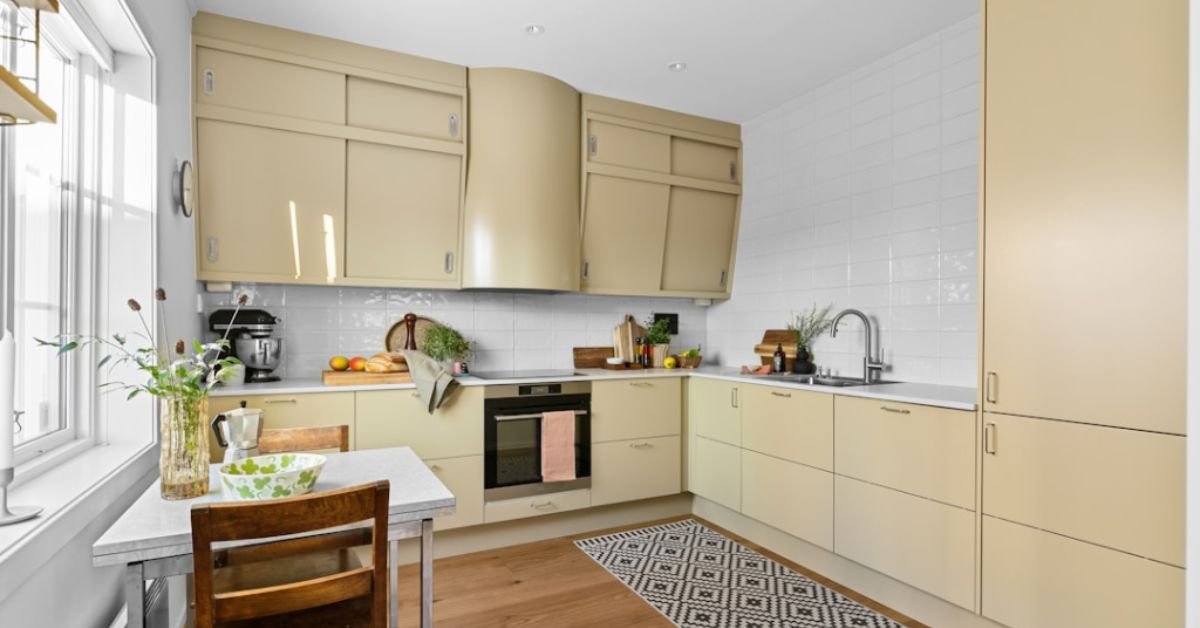
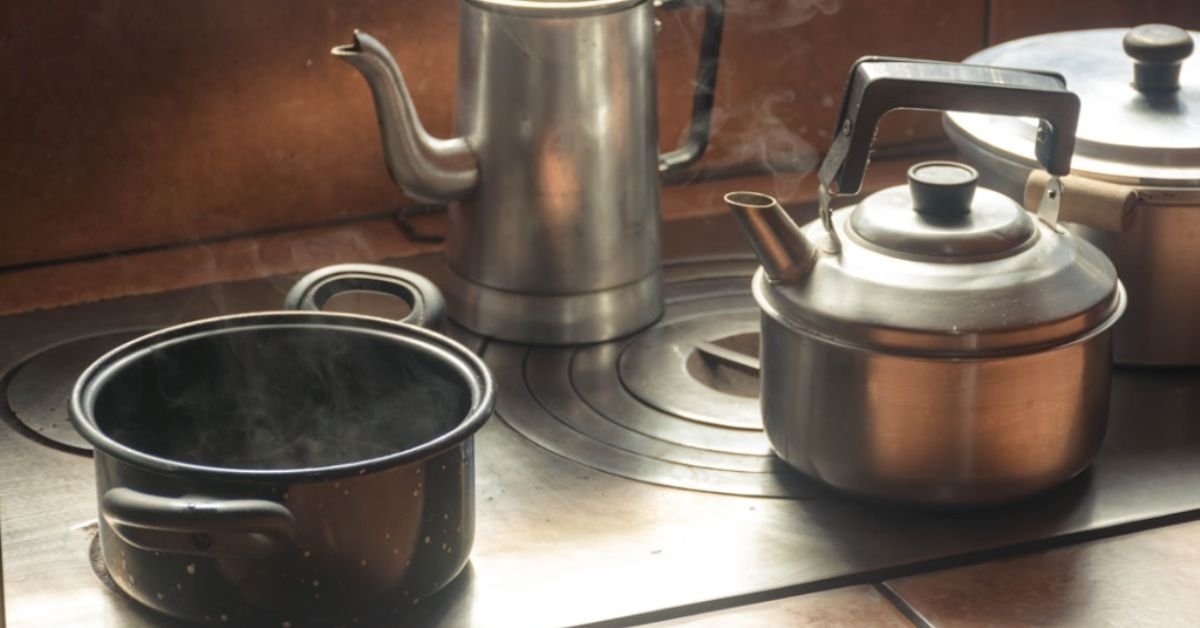
Our editorial team individually chooses every product that is suggested on neatcupkit. We might get paid if you buy something after clicking on any of these links.
A cluttered kitchen cabinet can turn meal prep into a frustrating scavenger hunt. You reach for a saucepan and knock over three lids. You need your favorite skillet, but it’s buried under a stack of mismatched cookware.
Sound familiar?
Organizing your pots and pans doesn’t require a complete kitchen overhaul. With a few smart strategies, you can transform chaotic cabinets into streamlined storage that actually works. You’ll cook faster, protect your cookware, and reclaim valuable space.
This guide will show you exactly how to organize pots and pans in a cabinet, step by step. Whether you’re dealing with a small kitchen or deep corner cabinets, these proven techniques will help you create a functional cooking space that makes meal preparation enjoyable.
Kitchen storage affects more than just appearances. When you organize pots and pans properly, you create a functional cooking space that saves time and protects your investment in quality cookware.
Here’s what you gain when you implement smart cabinet arrangement strategies:
Faster meal preparation. No more digging through stacks to find the right pan. Everything sits exactly where you need it. This simple change can cut your cooking prep time in half.
Extended cookware lifespan. Proper storage prevents scratches, dents, and rust on your valuable pots and pans. Your cookware stays in better condition longer, protecting your investment.
Optimized cabinet space. Smart arrangement techniques help you fit more items without overcrowding. You might discover storage capacity you didn’t know existed in your kitchen cabinets.
Improved kitchen aesthetics. Open a cabinet door to neat, organized cookware instead of an avalanche waiting to happen. It makes cooking more enjoyable and less stressful.
Better accessibility. Items you use daily stay within easy reach. Specialty pieces go in harder-to-access spots, maximizing your kitchen’s efficiency.
The right organization system turns your cabinets into efficient storage that supports your cooking routine and eliminates kitchen clutter.
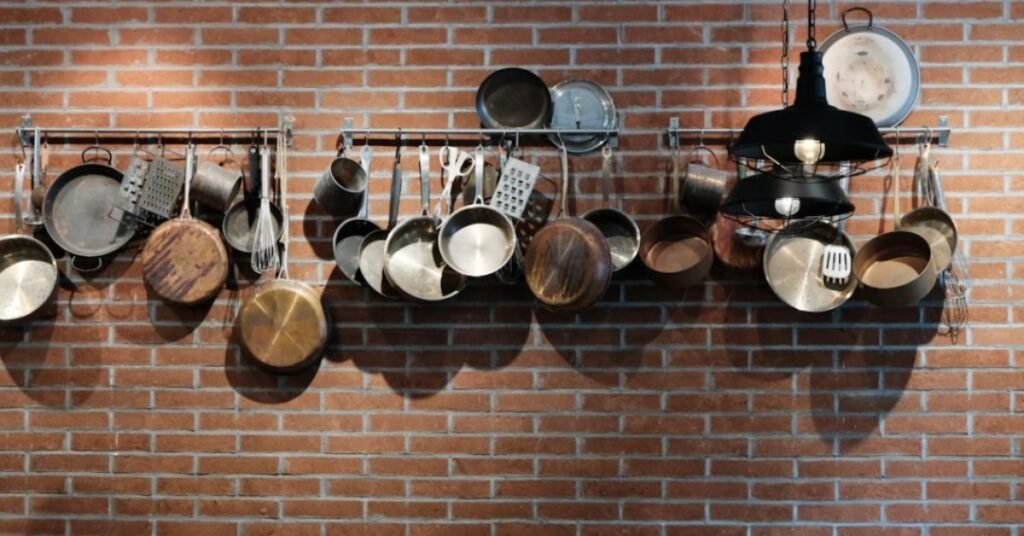
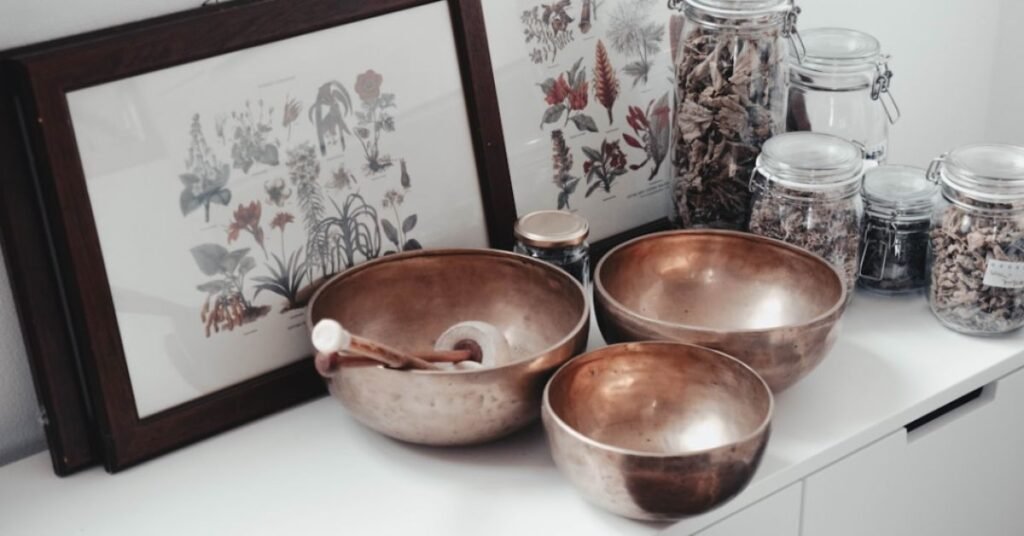
Step 3: Stack or Nest Smartly
Maximize your cabinet’s vertical space by stacking cookware strategically. Place the largest pots at the bottom and nest smaller ones inside to create sturdy, space-saving towers. Align all handles in the same direction to prevent snagging when removing a pot. To protect nonstick or enamel finishes, use felt pads or silicone liners between items. Keep stacks to three or four pieces for stability and easy access.
Step 4: Use Organizers and Racks
Add organizers to transform cluttered cabinets into efficient storage zones. Pull-out drawers eliminate the need to reach into dark corners, while vertical dividers hold pans upright to prevent messy “pan avalanches.” Mount lid racks on cabinet doors or shelves to reclaim unused space, and use Lazy Susans in corner cabinets for easy rotation and reach. Even simple tension rods can act as adjustable dividers for an inexpensive, DIY upgrade. Always choose organizers that match your cabinet dimensions and cookware variety.
Step 5: Create Zones for Easy Access
Organize pots and pans and your cabinets by cooking tasks. Keep daily-use pans near the stove and baking items by your prep area. This task-based layout improves workflow and keeps essentials handy. Add labels to help family members return items to their proper places and maintain order effortlessly.
Not all kitchens offer the same storage options. These storage solutions work for various cabinet configurations and kitchen layouts.
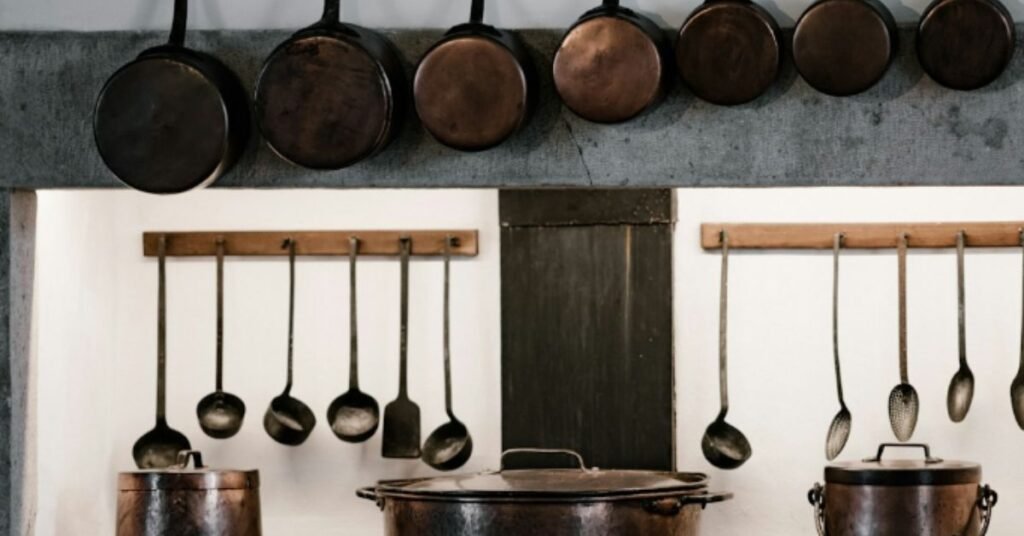
Pull-Out Drawers
Deep drawers with full-extension slides provide the best accessibility for pots and pans storage. You can see and reach everything without bending or digging through stacked items.
Install adjustable dividers to keep pots and pans separated within drawers. Stack items vertically when possible to maximize drawer height and visibility. Pull-out systems eliminate the need to remove multiple items to reach what you need.
These drawer systems work especially well in base cabinets where standard shelving creates dead space in the back corners.
Vertical Dividers
Storing pans vertically, like books on a shelf, prevents the frustrating pan avalanche. You can grab the one you need without disturbing the others in your cabinet arrangement.
Install adjustable wire or acrylic dividers to accommodate different pan sizes. This method works perfectly for skillets, sheet pans, and cutting boards. You can find quality dividers at home improvement stores or online retailers.
Vertical storage makes better use of cabinet height and keeps pan surfaces separated to prevent scratching.
Lid Racks
Pot lids are notoriously difficult to organize pots and pans in kitchen cabinets. They don’t stack well and take up disproportionate space when stored traditionally.
Mount a lid rack inside a cabinet door to utilize that often-wasted vertical space effectively. Alternatively, use a standing rack on a shelf that keeps lids organized and visible.
Some people prefer storing lids with their corresponding pots, but separate lid storage often creates more usable space and prevents lid-pot mismatches.
Hanging Racks Inside Doors
Cabinet doors offer prime real estate for kitchen storage. Install hooks or small racks on the inside of doors to hang smaller pans, pot holders, or measuring spoons.
Make sure door hinges can support the extra weight without sagging. Soft-close hinges may need adjustment when you add door storage. This approach keeps items visible and accessible without taking up valuable shelf space.
Choose lightweight items for door storage to prevent hinge damage over time.
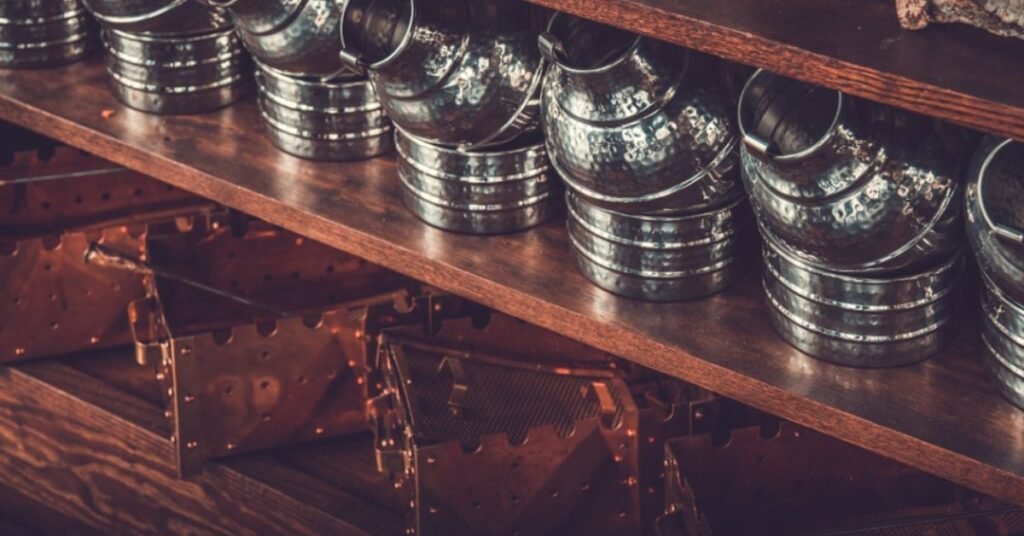
Lazy Susans or Tension Rods for Small Cabinets
Corner cabinets present unique storage challenges in kitchen organization. A lazy Susan brings items from the back to the front with a simple spin, eliminating dead corner space.
For narrow cabinets, install tension rods vertically to create dividers for baking sheets and pan lids. This space optimization technique requires no permanent installation but provides excellent organization.
Lazy Susans work particularly well for storing multiple pots and lids in corner spaces that are otherwise hard to access.
Different cookware requires different storage approaches for optimal organization. Here’s how to organize pots and pans based on type and material.
Pots & Saucepans
Stack these by size with the largest on the bottom for stability. Keep handles pointed in the same direction to prevent tangling and catching.
If you stack too many, pulling one out becomes difficult and potentially dangerous. Consider nesting no more than three or four pots together. Place your most-used saucepan on top for quick access during cooking.
For cabinet arrangement, position frequently-used pots on lower, more accessible shelves. Reserve higher shelves for pieces you use less often, like specialty stock pots.
Pans & Skillets
Store skillets vertically using pan separators or a vertical rack system. This prevents scratching and makes it easy to grab the exact size you need without moving other pans.
Cast-iron cookware needs special attention in your kitchen storage system. These heavy pans can rust if moisture gets trapped between stacked pieces. Store cast iron with paper towels between pans to absorb moisture and prevent rust formation.
Non-stick pans benefit from felt protectors or paper plates placed between them during stacking to preserve their delicate coating surfaces.
Lids
Store lids separately from pots when possible using dedicated lid storage solutions. Use a vertical lid organizer that keeps them upright and separated for easy identification.
Some people prefer a drawer organizer with individual slots for different lid sizes. Others mount a metal file organizer inside a cabinet door for space optimization. Choose the method that best fits your available kitchen storage space.
If you must store lids with pots, nest them inside their corresponding pot rather than stacking them on top. This keeps the stack lower and more stable while preventing lid damage.
Dutch Ovens & Heavy Pots
These kitchen workhorses deserve accessible spots despite their substantial size and weight. Place them on lower shelves or in base cabinets to avoid lifting heavy items from high storage areas.
Dutch ovens often have enamel finishes that scratch easily when stacked carelessly. Don’t stack other items directly on top without protection. If space is tight, use a dish towel as a buffer between items.
Store the lid separately or upside-down inside the pot with a cloth between them to prevent chipping and maintain the enamel finish.
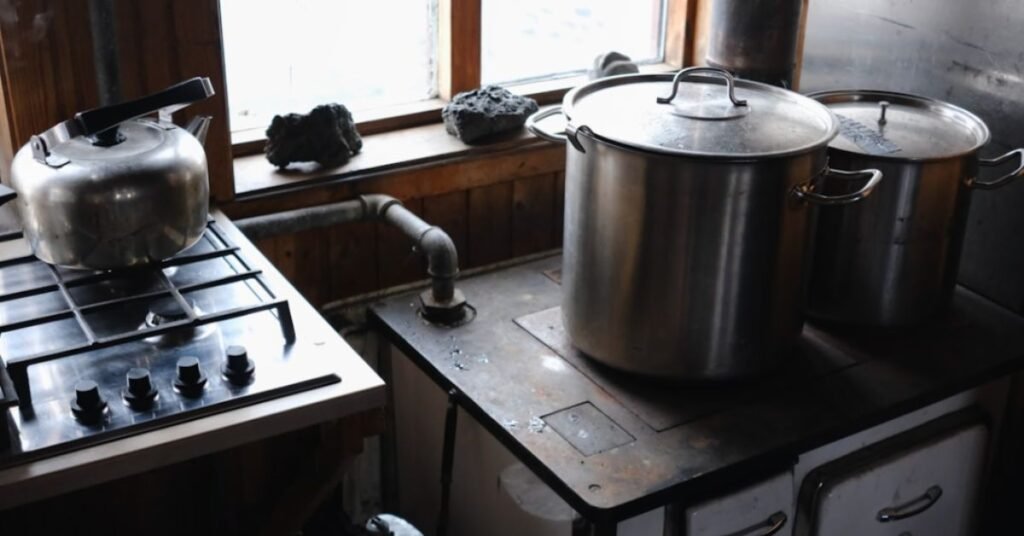
Measure before buying organizers. Cabinet dimensions vary widely between kitchen designs. Measure height, width, and depth before purchasing storage solutions to ensure they fit properly and maximize space utilization.
Consider adjustable systems. Your cookware collection will change over time as you upgrade or add pieces. Adjustable dividers and shelves adapt as your storage needs evolve.
Use vertical space effectively. Most cabinets have wasted height between shelves that you can capture. Stackable organizers or shelf risers help you utilize this unused space efficiently.
Maintain the system consistently. Put items back in their designated spots after washing and drying. It takes just seconds but prevents gradual disorganization of your kitchen cabinets.
Re-evaluate periodically. Every six months, assess whether your organization system still works for your cooking habits. Adjust storage solutions as needed based on what you’re actually using regularly.
Use vertical dividers to store pans upright like files. Install pull-out drawers if possible to access items in the back. Store lids separately on door racks to save space. Consider nesting smaller pots inside larger ones with protective padding.
Store pot lids vertically in a dedicated lid rack, either mounted inside a cabinet door or standing on a shelf. This prevents them from becoming jumbled and makes finding the right size much easier. Avoid stacking lids flat as they become difficult to separate.
Yes, but use protective barriers between them. Place paper plates, felt pads, or cloth towels between nonstick surfaces to prevent scratching the coating. Limit stacks to 3-4 pans maximum to maintain accessibility and prevent damage.
Install a lazy Susan to bring items from back to front with a spin. Use pull-out drawers if your budget allows. Store less frequently used items in the back corners and keep everyday cookware toward the front for easier access.
Yes, pull-out drawers significantly improve accessibility in deep cabinets. They eliminate the need to reach into dark corners and allow you to see everything at once. The investment pays off in daily convenience and better use of cabinet space.